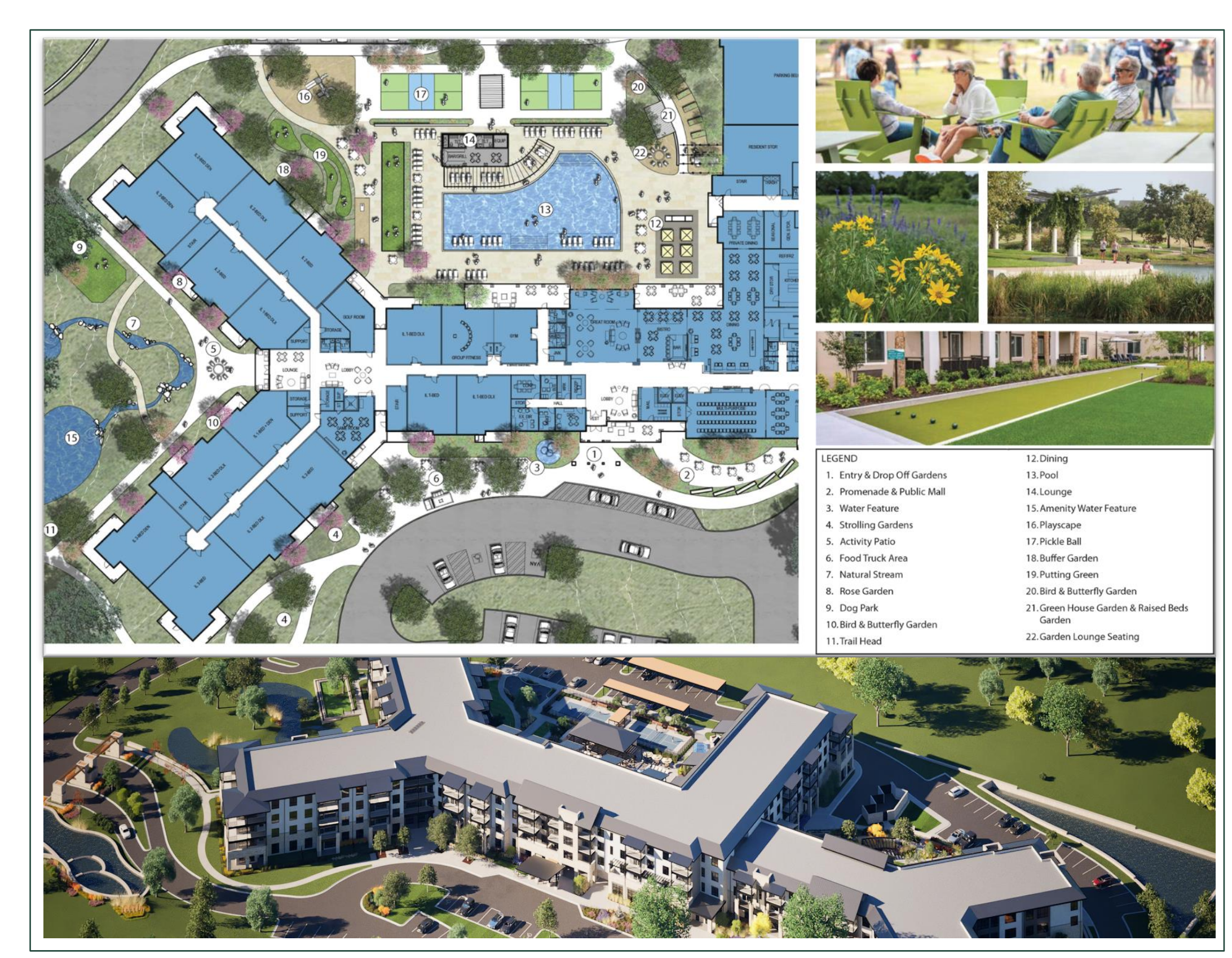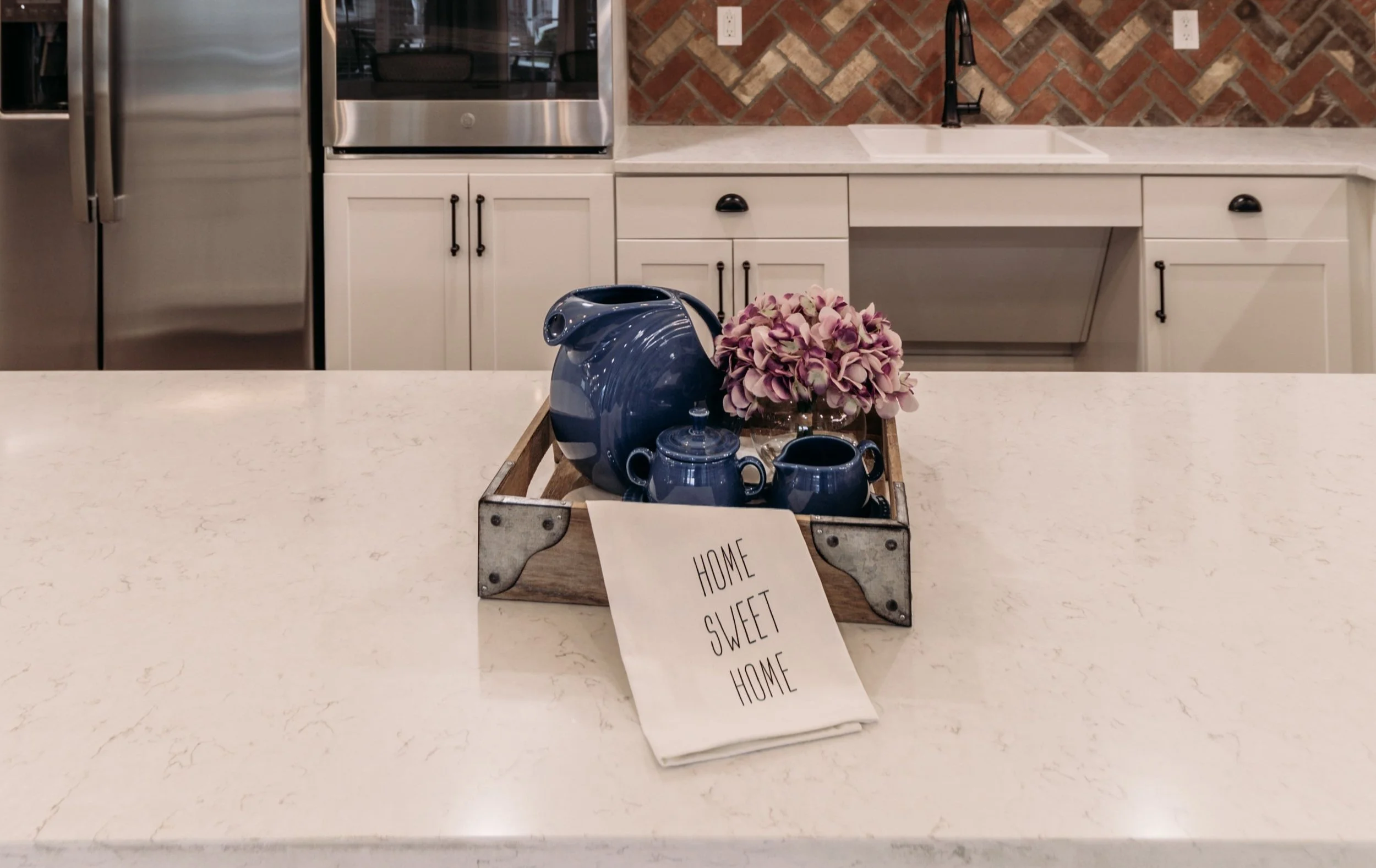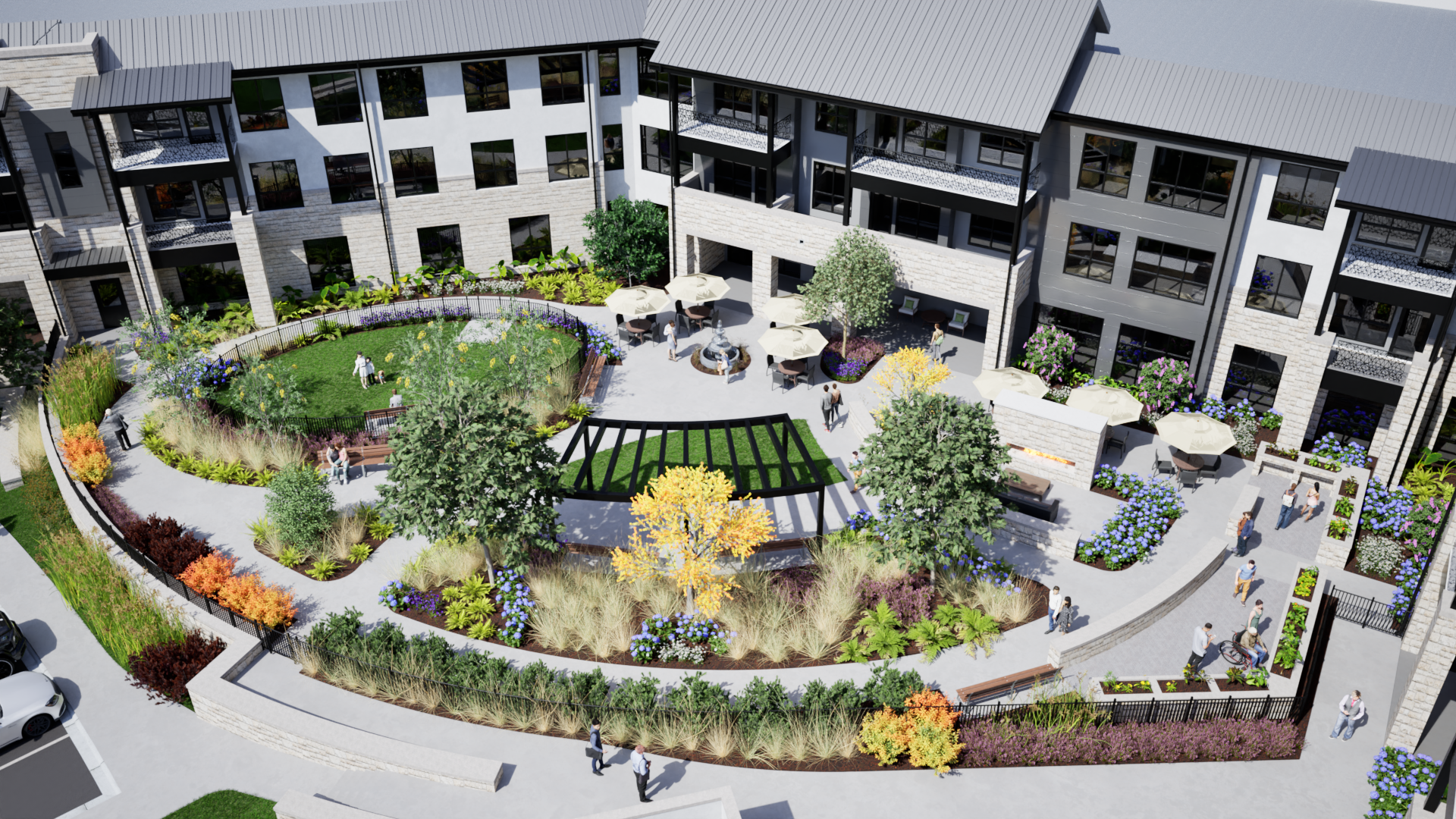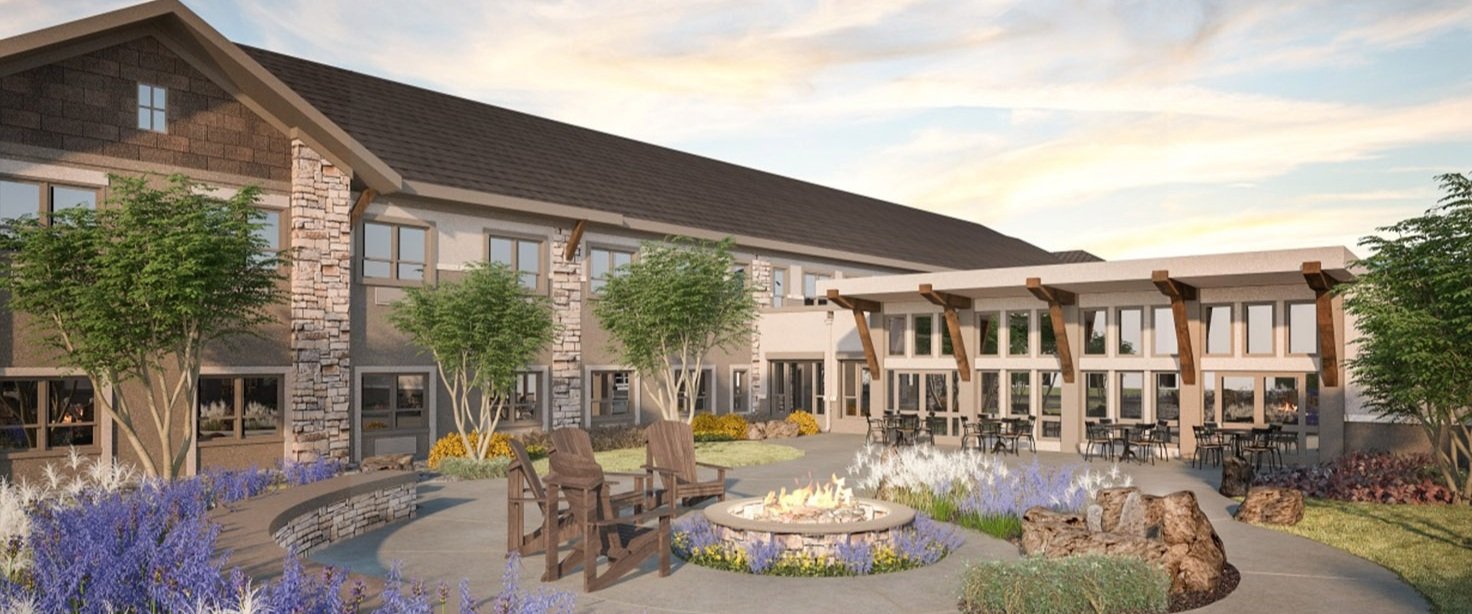Trends in Senior Living Development and Repositioning
It wasn’t that long ago when every home had a landline telephone, and cell phones were considered a luxury. Today, much of the technology that worked 20 or even 10 years ago is outdated. The same is true for senior living. Many of the amenities that used to attract residents are woefully inadequate today – a single spacious dining hall, a game room for Bingo, and a swimming pool aren’t enough to meet their needs, interests, and expectations. However, many communities have ‘good bones’ and can be repositioned or renovated for seniors today and for years to come.
Active Aging is the New Normal
Aging is no longer a bad word. We are all getting older; however, staying active, seeking ways to live longer, better, and staying connected with family and friends is an ongoing trend. As a result, we are increasingly attracted to senior living communities for our family members or ourselves that promote and support these wellness expectations.
Pi and the Active Wellness team are creating active aging spaces, partnering with senior living communities and others to integrate fitness and wellness amenities. Our thought process: Aging isn’t synonymous with decline, particularly with the right approach to exercise and nutrition.
Community Designs That Promote Mental Health and Well-being
As more seniors seek lifestyles that focus on well-being and active engagement, it is important to have communities that address not only physical health but also mental well-being. The numbers bear this out. According to the World Health Organization, over 20% of adults aged 60 and older have some mental or neurological disorder. Depression and dementia are most common, with anxiety following closely behind. There is much that senior living communities can do to promote the mental and emotional health of their residents.
Designing for Longevity: How Pi Architects Works to Fight the Loneliness Epidemic
It is possible to be surrounded by people and still feel lonely. According to the World Health Organization (WHO), loneliness is common among older adults. While moving into a senior living community is often seen as a solution, the relocation alone rarely eliminates the issue. Loneliness does not vanish simply because older adults share the same address. What people need are meaningful opportunities for connection. And Pi Architects can help. Read more.
Designing for Longevity: Celebrating Active Aging Week
There was a time when “active” and “aging” weren’t commonly used in the same sentence. Older adults were often depicted sitting on porch rocking chairs or on a park bench. When they were portrayed as active, it involved engagement with traditional activities such as golf or shuffleboard. When the International Council on Active Aging initiated Active Aging Week in 2003, it spotlighted the recognition that many older adults have healthy, engaged lifestyles and prioritize wellness activities on a daily basis. The image of the older adult has evolved and continues to do so as baby boomers and Gen Xers seek to make senior living their own.
Master Planning for Senior Living: Integrating the Village Model
As senior living communities evolve, master planning must focus on fostering engagement, collaboration, and long-term well-being. Whether individuals reside in an active adult community, a senior living development, or independently within a broader neighborhood, providing access to integrated support systems is key to successful aging. One model gaining traction is the Village-to-Village Network, grassroots, community-based approach that enables older adults to age in place with confidence and support.
The Many Demands of Solo Agers
According to population data, about 28% of people aged 65 and older live by themselves; more than 6 million men and 10 million women. Many of these individuals are residents or potential residents of senior living communities; they can and do live independently. These individuals have issues that require support, with nearly 4 in 10 having vision or hearing loss, cognitive issues, or other problems or disabilities. An AARP survey shows that an astonishing 95% haven’t made a reservation at a senior living community, and 82% haven’t looked into finding an easier or less expensive place to live or made any modifications to their homes.
Designing for the Active Adult: How Pi Architects Support Active Aging Through Community Design
While we cannot stop or turn back the clock, Pi Architects designs active adult communities that enable people to age in spaces that meet their needs and interests, providing residents with services and amenities that focus on well-being and longevity, empowering residents to live more vibrant lives. It is about creating communities, places where people feel at home and connected to those around them.
In active adult communities, the design must reflect the mindset of a generation that sees aging differently. These residents often view themselves as youthful, energetic, and far from retirement age in the traditional sense. As a result, the communities that appeal to them must be vibrant and full of life.
Master Planning: Planning and Resilience Without the Crystal Ball
Designing a vibrant and in-demand senior living community is easy when there are no limits. In the real world, financial, operational, and scheduling constraints are a given. That’s where master planning becomes essential. It helps prioritize what’s possible now while laying the groundwork for future growth, innovation, and community needs. It enables you to determine what you can do now and helps create a timeline to realize additional plans, desires, and visions of the community.
Engaging Residents for Vibrant Master Plan
It’s an eternal conundrum. The budget is limited, but the sky’s the limit when it comes to hopes, dreams, and expectations. This can be a challenge in senior living when residents and prospective members dream big, but their dreams cost money, and the coffers aren’t overflowing. However, a combination of engagement, listening, transparency, and thoughtful compromise can enable facilities to make small innovations, bigger renovations done over time or in phases, and viable options to limit costs while maintaining quality and satisfaction. All this calls for a master plan and a team with design, marketing, customer service, leadership, communication, and negotiation skills. This can be especially useful in older communities where no significant changes or updates have been made in several years.
July 4th Celebrations That Sparkle
July 4th presents a great opportunity to showcase the amenities and features of your community while providing some fun and unique events and activities for your residents and staff. Involve residents in planning. Let talented residents perform and bring in friends and family members who can play music, donate food or other items, etc. Consider inviting leaders, partners, and friends in the community
Make Hopping Good Fun for Residents at Easter
Easter marks the joyful arrival of spring, so this is a perfect time to enjoy all the season has to offer. Remind your residents of outdoor amenities with a community flower show, a springtime community picnic, or a pop-up shop with a local garden center. Easter is a time for celebrating and reflection, senior living communities can offer something for all their residents, as well as families and friends.
The Future of Senior Living: Clearing the Cloudy Crystal Ball
Increasingly, senior living communities will encounter people who don’t want a sedentary lifestyle. Preparing for the future of senior living means revisiting much of what we know about what older adults want, need, and can afford. It is important to figure out how to respond to the needs around well-being and longevity. Michele Holleran, CEO, of DeArment Consulting, LLC states, “I define longevity not only as the span of someone’s life but the quality of that lifespan.”
Making Dollars and Sense of Intergenerational Living
Senior living industry leaders agree that designing communities that enable and promote intergenerational connections is a priority for Baby Boomers and Gen Xers. Seniors are embracing new approaches that create engagement and integrated community living, breaking down ageism while supporting socialization, health, and wellness.
Longevity: Innovative Approaches to Senior Living for a Thriving Future
People are aging in better health. For the first time in humanity, there are five generations living together, it's something that has never happened before. Globally, life expectancy increases every 10 years, and Nicola Palmarini, director of the National Centre for Ageing in the UK, said during a recent webinar that we are moving from an aging society to a longevity one. He explained, “There isn’t just one way to live healthier longer lives. Each one of us has their own.
A Key Demographic Not To Be Overlooked
When planning a repositioning or renovation project for your community, consider a potential missing demographic in your focus: individuals born between 1954 and 1965. These individuals do not fully align with the Boomer or Gen X generations. While often grouped with Boomers or Xers, they typically exhibit greater independence, a more active lifestyle, and a strong commitment to pursuing their dreams and making an impact.
LCS Offered Powerful Insight into How Data and Analytics Help Predict the Future
Thanks to sophisticated and innovative technology, it is easier than ever to collect data about senior living. The key is to use this information effectively to meet the needs of residents, appeal to prospects, plan renovations, and new builds, and watch for trends and emerging challenges. In essence, data and analytics help assess and manage the present and predict the future.
A recent webinar, The New Senior Consumer: Data and Analytics, offered some powerful insights into how data is revolutionizing senior living.
Project Highlight: Westminster of Austin
Pi has submitted Westminster in Austin, TX, for a 2024 Senior Housing News Architecture and Design Award. “This community stands as a testament to innovative senior living,” said Greg Hunteman, AIA, Pi president. He added, “Westminster was a trailblazer, being the first in Texas to combine the privacy of apartment homes with the services of a 24/7 on-site health center, and to offer the Life Care option, ensuring a predictable way to receive and pay for care services.” Over the decades, Westminster has undergone multiple expansions and reinvestments, reinforcing its status as Austin’s premier Life Plan community.
Pi Architects Gives Thanks to Those that Inspire Purpose and Well-being
As we gather around tables with family, friends, and loved ones this Thanksgiving, Pi Architects’ team wants to reflect on this past year's progress, growth, and purpose. This holiday is a special time to pause, appreciate what we have, and look forward with gratitude and excitement for what’s yet to come. We have so much to be grateful for this Thanksgiving. We have had the opportunity to partner with visionaries and organizations to design communities and spaces that promote comfort, purpose, and well-being. We are also incredibly fortunate to have a team of passionate, talented, and creative professionals – specialists across all major design disciplines, architecture, interior design, repositioning, development, master planning, and longevity.
The McKinsey Health Institute: Are We Giving Older Adults What They Want
A recent report from the McKinsey Health Institute confirms what we’ve been saying about aging and the need to create and reposition senior communities to appeal to this growing population. Findings from a survey of more than 21,000 older adults (those aged 55 and older) showed that these individuals prioritize having a purpose, managing stress, enjoying meaningful connections with others, and maintaining independence.




















